Editor's Note: A complementary article introducing some of the new radar applications using the technologies described in this article is included here in the online issue of Microwave Journal and can be viewed at www.microwavejournal.com/radarapplications.
Recent breakthroughs in radar technology combined with the demand for compact, affordable and high precision radar for military and commercial applications, has led to a renaissance in the methods and use of radar. Many of the upcoming sectors of technology growth, namely autonomous vehicles, unmanned aerial vehicles (UAV) and various commercial/civilian applications, rely upon solid-state radar and new methods of fabrication and programming. This resurgence is a byproduct of escalating advancements in radar, stealth and jamming technologies for defense that is driving conventional radar solutions into obsolescence.1 A wide accessibility to sophisticated digital-signal processing (DSP), agile RF transceivers and cutting-edge antenna techniques is fueling this accelerating change.
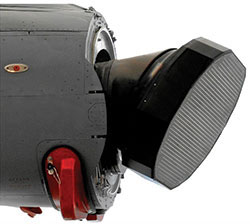
Figure 1 Many fighter jets have been retrofitted with newer AESA radar technology, eliminating mechanical steering.2
A contributing factor to enhanced capabilities and decreased costs is the development of new antenna and radar fabrication technologies. Among these, GaN power transistors, low noise amplifiers (LNA) and active electronically steered array (AESA) antennas have been central to recent radar and radar jammer military contract awards and system deployments around the globe. Radars employing these technologies outperform conventional radar systems and have spurred a flood of new and innovative radar design and fabrication approaches. New AESA technologies have enabled an evolution to higher (millimeter wave) frequencies providing greater resolution with smaller phased-array antennas, while modular design approaches enable rapid adoption of new digital processing and computation techniques.
Active Electronically Steered Array (AESA)
In prior decades, phased array antennas greatly improved the form factor and performance of conventional radar. A more recent enhancement is enabled by greater DSP and computational methods. Active electronic beam steering (or beamforming), leverages the performance benefits of phased array antennas and introduces active steering, greatly reducing the maintenance costs and failure rates of mechanically steered radar antennas while increasing radar scanning speed and accuracy2 (see Figure 1). Among the industry leaders are Raytheon, Northrop Grumman, Lockheed Martin and Thales; but, there are many other companies with active development in this area. AESA radar is in high demand for the retrofit, upgrade and replacement of legacy radar technology.
In the latest breed, the transmit/receive (TR) modules can be configured to operate either independently or in clusters. This enables the generation of multiple beams operating at different frequencies in order to devote scanning resources dynamically and intelligently. This highly adaptable configuration helps to reduce the probability of intercept compared with passive array radars. Additionally, directional reception and frequency agility reduce susceptibility to jamming, particularly if wideband.
The modular AESA design also enhances reliability, as any failures in the TR modules will not disable the whole system and repairs/maintenance can readily be accomplished by swapping modules. TR modules for AESA radars are essentially highly capable software-defined radios (SDR) that can also be configured for radio communication with extremely high data rates. The highly directional beamforming capability also provides communication security by confining communication to receivers within the beam’s focused path.4
AESA radar antennas typically have maximum scanning angles less than 120 degrees. For 360 degree coverage, a common solution is to mount them on mechanically rotating platforms. Full 360 degree coverage has recently been demonstrated with fixed arrays using back to back antenna panels. An example is Raytheon’s self-funded prototype designed as an upgrade to the Patriot Missile system. Other systems use several panels linked to the same radar system (three or more) to provide omnidirectional scanning and tracking capabilities Notably, the cost of an AESA system is roughly proportional to the size and performance of the array, and the number of TR modules.
MIMO
In order to reduce the size, weight, power and cost (SWAP-C) of AESA radars and increase scalability, researchers are developing sophisticated techniques that leverage sparsely populated arrays that are combined to form larger virtual arrays using multiple-input multiple-output (MIMO) technology similar to techniques being developed for 5G wireless communications. MIMO radar leverages spatial diversity with multiple separate transmit and receive antennas that use computational algorithms to calculate radar reflections and achieve compound resolution.5 These antenna systems can also operate at several frequencies, or over a wideband set of frequencies simultaneously without interfering, to further enhance discrimination of legitimate targets over radar clutter.
There have been claims that MIMO radar systems might outperform analogous conventional phased-array radar systems.6 Though this has yet to be conclusively demonstrated, there are applications where the SWAP-C benefits of compact sparsely populated MIMO antenna arrays might enable high precision radar capabilities where a phased-array radar would be too costly, heavy, large or power consuming to be deployable; for example, on SWAP-C restricted platforms such as a small UAS, satellite or rapidly deployable mobile radar station. Some recent research has shown potential improvements in synthetic aperture radar (SAR) MIMO radar systems for ground moving target indication (GMTI) applications that have exceeded phased-array radar target geolocation accuracy for fast and slow moving targets with fewer false alarms and potentially higher jamming resistance.7 Highly sophisticated DSP and digital waveform generation technologies are necessary, and must be effectively applied, considering the environmental conditions and radar signature of the target, in order to realize the performance benefits.
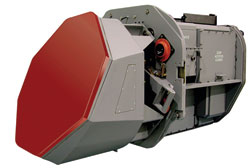
Figure 2 Millimeter wave radar has the ability to penetrate dust and fog, which enables it to accurately detect and identify other vehicles and road hazards.
MIMO radar research also focuses on omnidirectional antenna systems, which suffer from higher losses than phased-array antennas. This loss may be associated with waste energy depleted outside of a target area of interest. Nevertheless, there are methods being proposed to use cognitive radio systems to augment MIMO radar and mitigate these drawbacks.
ULTRA-WIDE BANDWIDTH MILLIMETER WAVE RADAR
To avoid the spectrum congestion at lower microwave frequencies, and to achieve high-precision and high resolution capabilities many applications have moved beyond 20 GHz. Fortunately, at millimeter wave frequencies there are several frequency bands that are designated with 0.5 GHz, 1 GHz and even 4 GHz of available bandwidth. Radiation at millimeter wave frequencies tends to suffer higher atmospheric losses, but is more directional than at sub-6 GHz microwave frequencies. Millimeter wave radars benefit from reduced noise, greater resolution due to ultra wide bandwidths, and reduced size.8
Many of the latest automobile radars leverage the 79 GHz millimeter wave frequency band that can penetrate sufficiently in adverse conditions, such as fog, dust and rain that are impenetrable by optical sensors (see Figure 2). Operation in this band also enables increased resolution and better hazard detection features. The benefits of millimeter wave radar translate to other applications as well, including detection and surveillance of UAS/drones and even medical monitoring. For example, multi-channel radar for perimeter surveillance (MCRPS) and scanning surveillance radar systems (SSRS) using FMCW principals, with 1 GHz of bandwidth and 100 mW at 94 GHz, have been used to achieve 15 cm range resolution and classification of UAS/drones based on their rotor typologies. Also, 24 GHz band radar has been used in remote heart rate monitors able to discriminate and characterize a heartbeat accurately and efficiently with less than 7.17 ms of RMS error.9
The benefits seen for military applications (e.g., better range, resolution and greater FMCW-based object identification) may be leveraged for new applications in a wide range of fields from scientific, medical and security. The reduced susceptibility of millimeter wave radar to light conditions, weather and clutter provides surveillance advantages over visual spectrum and IR camera technology, as well. For example, security and safety management technology for concealed threat detection has been developed that can reliably detect threats at a standoff distance of 100 ft.10 This currently uses W-Band (75 to 110 GHz) frequencies and has been implemented in a handheld version with over 30 ft. effective standoff range.
RADAR DESIGN AND FABRICATION
Many of the latest advancements and applications of radar technology may have been possible with legacy radar technology; however, the SWAP-C benefits and advances of digital computation have enabled a more rapid adoption in the growing radar industry, as they have proven to be cost-effective and capable. New fabrication techniques and semiconductors are being developed to spur further growth.
GaN Technology’s Impact on Radar
Many of the latest U.S. DoD contracts and military development in other countries have required GaN-based TR modules for retrofits and upgrades to legacy radars. The main reason is that GaN power amplifiers (PA) in the TR modules of AESA radar have power densities, reliabilities, frequency capabilities and bandwidths far exceeding other solid-state technologies. They compete with TWTs as well, but without the accompanying reliability, size and maintenance issues. Like other class III-V semiconductor materials, such as GaAs and indium phosphide (InP), GaN semiconductors have a very high electron mobility/velocity compared to silicon and silicon carbide (SiC).
GaN also demonstrates extreme physical ruggedness, radiation resistance, high voltage survivability and very high thermal stability. Consequently, GaN power electronics exhibit impressive power densities, and in the case of PAs, high power-added efficiencies (PAE) compared with other solid-state technologies. GaN is also used for low noise amplifiers (LNA) with similarly rugged characteristics as the GaN PAs, providing sensitive receiver technology that is not easily jammed, damaged or otherwise impacted by the limited dynamic range due to a low input voltage threshold.
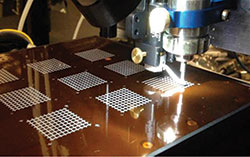
Figure 3 3D printed antenna arrays will reduce the cost and weight of AESA radars, using plastic substrates and other low weight and low temperature fabrication components.
The benefits of GaN technology for reducing SWAP-C aspects of telecommunications, satellite and other power electronics has been explored by many industries with the aim of increasing wafer sizes and improving GaN processes. Methods of improving heat dissipation have also led to higher power levels and smaller, more cost effective devices. GaN is developing into a mainstream technology that will lead to radar and communications systems with much higher bandwidths and performance to meet lower cost thresholds and bring about new radar and radio applications.
3D Printed Radar Components, Modular Radar Design and Magnetic Material Enhancements
To further reduce radar component SWAP-C, advances in 3D printing of electronics, modular RF/microwave component design techniques and the use of magnetic material enhancements are being investigated by research institutions, industry and the DoD. Smaller, more efficient, scalable and flexibly manufactured radar components, including antennas and RF/microwave passive components, will lead to more sophisticated manpack, UAS and commercial radar systems. Such techniques must be able to print the antenna, phase-shifters, filters and transmission lines on a low-cost substrate. A research group at the Raytheon UMass-Lowell Research Institute is pursuing such a project, using plastics, 3D printed conductive ink, frequency-selective surfaces and actively tunable varactor diodes (see Figure 3).11
Raytheon is also collaborating with the Army Research Laboratory (ARL) on the Scalable, Agile, Multimode, Front-End Technology (SAMFET) program for the Army’s Next Generation Radar (NGR).12 The Army proposes using an open architecture for NGR to reduced iterative development cycles and upgrades, while encouraging modular component development, new radar designs and new fabrication techniques as well. RF/microwave and digital technologies, such as OpenVPX and OpenRFM will also enhance the modular design and development of high performance military electronics that rely on tightly coupled digital and RF/microwave systems.
Approaching SWAP-C reduction from another angle, DARPA has initiated a research project with the aim of integrating magnetic components into RF and digital integrated circuit (IC) processes. The Magnetic Miniaturized and Monolithically Integrated Circuit (M3IC) project’s goal is to shrink the size of communications, radar and electronic warfare (EW) systems and enable new methods of control/functionality.13 It is unclear from the DARPA program information if the project is open to the use of metamaterial technologies, as some have proven to demonstrate magnetic properties.
IMPACT ON COMPONENTS AND DEVICES
The latest radar and radio systems are complex and highly integrated assortments of digital, analog and RF/microwave electronics controlled and interpreted by sophisticated computer systems (see Figure 4). The SDR technology that powers most modern radar can also be found in Wi-Fi routers, smart phones, cars and cellular base stations. The differentiating factor between aerospace, defense radar and these modern commercial radios is the sophistication, bandwidth and power of the RF and digital electronics, along with the size and power handling capability of the antennas.
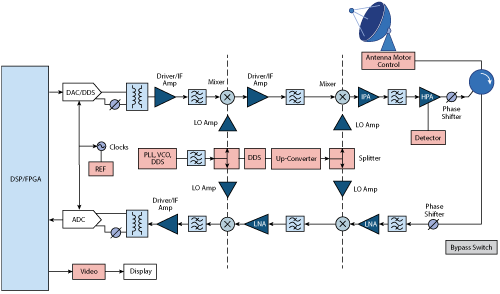
Figure 4 A modern radar signal chain employs many RF and microwave components.
As consumer and industrial radio and radar technology advances, however, the lines are blurring in terms of capability and sophistication. To maintain its lead, the DoD continues to invest in developing the next generation of components and devices for aerospace and defense radar. This impacts the components and devices themselves, as well as the equipment used to design, test and fabricate them.
Analog/Digital Electronics
Advanced DSP and digital waveform generation technology enhances programmability and flexibility to provide next-generation radar waveforms. Commercial FPGAs have become extremely powerful—with over 20 TMACs of fixed-point performance and 10 tera floating point operations per second (TFLOPS) of single-precision floating point performance; and unlike CPUs and GPUs, FPGAs can be reconfigured as requirements change. In a military scenario, this facilitates and enables flexible adaptation to evolving threats, especially considering their capabilities with respect to latency, parallelism, input/output (I/O) speed and computational intensity.14
However fast the processing capability, analog data must first be converted to digital data to take advantage of these benefits. Hence, the development of analog-to-digital converters (ADC) and digital-to-analog converters (DAC) has been to increase the speed of ADC/DAC components to enable direct RF sampling/synthesis at gigahertz frequencies. Although direct RF synthesis and sampling at higher microwave and millimeter wave frequencies is currently not feasible for most deployed systems, there are several 2.4 GHz ISM (or S) Band ADC/DACs used in SDRs that have this capability. Higher frequency digital synthesis and sampling eliminates stages of up-conversion and down-conversion, avoiding the performance limitations associated with mixers in the signal chain for high microwave and millimeter wave frequency radar, while increasing bandwidth.
With the increasing demand for FPGAs, general purpose processors (GPP) and ADC/DACs, associated components and technologies are also needed. This includes high speed RAM, longer-term memory storage, such as solid-state drives (SSD), embedded computers and data acquisition control systems.
RF/Microwave Electronics
Similar to radio hardware, radar signal chains combine multifaceted transmit and receive capabilities that can handle extreme power levels, wide bandwidths and complex signal modulations, while an array of switched filter banks and phase shifters is also required. The transmit/receive (TR) modules powering each antenna array element send to the antenna and return to the receiver microwave or millimeter-wave signals generated or deciphered by the DSP cores. TR modules amplify, filter and up-convert/down-convert the signals in several stages. Coaxial, stripline or waveguide interconnects transfer high-fidelity signals from one subsystem to another with as little loss as possible.
Table 1 provides a shortlist of the RF/microwave components required for a variety of modern radar types. Depending upon the scale of the radar, several to thousands of each of these components may be used in a single aerospace or defense AESA.
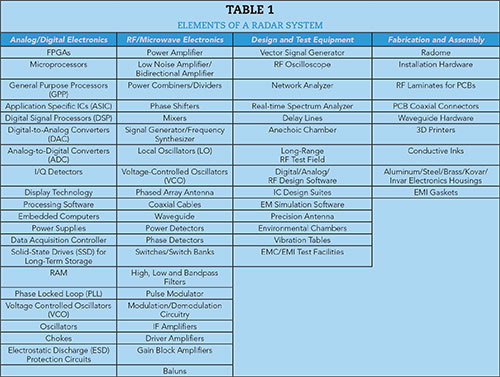
TEST AND MEASUREMENT EQUIPMENT AND FACILITIES
Bandwidths of the latest radar technology far exceed the capabilities of commercially available test and measurement equipment; although expensive and highly customized test systems do exist that bridge that gap somewhat. Increased agility and programmability has also made new radar systems impossible to test thoroughly over every operational mode and condition. This is driving the development of more modular and configurable test equipment as well as more advanced EM and design simulation software.15
An example is the increased utility of real-time spectrum analyzers (RTSA) paired with vector network analyzers (VNA) for radar characterization. As radar waveforms adapt and change, new methods of identifying friend or foe (IFF) and testing this capability are also required. This demands instruments that are advanced radars themselves, equipped with high levels of diagnostic and reporting capabilities.
Signal generators with far greater bandwidths must supply complex radar waveforms. Furthermore, modern facilities to test the RF, physical and survivability characteristics of radar components are necessary—this includes EMC/EMI facilities, vibration tables, environmental chambers and near/far field test ranges.
CONCLUSION
Fielding of radar systems that meet the latest demands of the modern battle space and a diverse range of new radar applications requires advanced technologies and techniques from digital and RF/microwave hardware, to simulation software and test systems. New material development, sponsored by the U.S. DoD and conducted by industry aerospace and defense organizations, is also needed to enhance SWAP-C. All levels of radar design and implementation are changing to accelerate next generation system development. This is pushing the boundaries of RFIC and monolithic microwave integrated circuit (MMIC) design, DSP techniques, material science and testing.
Lead times and design cycles for aerospace, defense and automotive radar are compressing, placing a greater burden on component and device procurement. Many RF/microwave suppliers require relatively long lead times and PO processing that take weeks or months for approval. This is changing as well, with just-in-time solutions being applied to support the latest radar programs.
References
- K. Mizokami, “China Claims It Developed ‘Quantum’ Radar To See Stealth Planes,” Popular Mechanics, September 2016, www.popularmechanics.com/military/research/a22996/china-quantum-stealth-radar/, Retrieved September 28, 2016.
- E. Brookner, “Radar and Phased Array Breakthroughs,” Microwave Journal, Vol. 58, No. 11, November 2015.
- Eurofighter AESA Antenna, ILA Berlin Air Show, April 24, 2014, Wikimedia Commons, commons.wikimedia.org/wiki/File:ILA_Berlin_2012_PD_193-Detail-2.jpg.
- “US Navy All Set for AN/SPY-6(V) Radar Array Tests,” www.navaltoday.com/2016/07/07/us-navy-all-set-for-anspy-6v-radar-array-tests/, July 2016, Retrieved September 28, 2016.
- A. Hassanien, M. G. Amin, Y. D. Zhang and F. Ahmad, “High-Resolution Single-Snapshot DOA Estimation in MIMO Radar with Co-Located Antennas,” IEEE Radar Conference, May 2015.
- R. Heckel, “Super-Resolution MIMO Radar,” Proceedings of the IEEE International Symposium on Information Theory, July 2016.
- “Robust Wideband Waveforms for Synthetic Aperture Radar (SAR) and Ground Moving Target Indication (GMTI) Applications,” www.sbir.gov/sbirsearch/detail/115394, Retrieved September 28, 2016.
- “Ground Moving Target Detection in MIMO-SAR System,” 2016 IEEE International Geoscience and Remote Sensing Symposium (IGARSS), July 10-15, 2016.
- “Detecting Heartbeats Remotely with Millimeter-Wave Radar,” Kurzweil, Accelerating Intelligence, January 2016, www.kurzweilai.net/detecting-heartbeats-remotely-with-millimeter-wave-radar, Retrieved September 28, 2016.
- “Millimeter Radar Threat Level Evaluation,” Aventura Technologies Inc., www.securityinfowatch.com/product/12172969/aventura-technologies-inc-millimeter-radar-threat-level-evaluation-mirtle, Retrieved September 28, 2016.
- M. Orcutt, “New Ink Opens the Door to3-D-Printed Radar,” MIT Technology Review, December 2015, www.technologyreview.com/s/544526/new-ink-opens-the-door-to-3-d-printed-radar/, Retrieved September 28, 2016.
- M. Iriarte, “U.S. Army and Raytheon to Work Together in Developing NextGen Radar System,” Military Embedded Systems, July 2016, www.mil-embedded.com/news/raytheon-and-u-s-army-to-work-together-in-developing-nextgen-radar-system/, Retrieved September 28, 2016.
- D. Palmer, “Magnetic Miniaturized and Monolithically Integrated Components (M3IC),” DARPA, www.darpa.mil/program/magnetic-miniaturized-and-monolithically-integrated-components, Retrieved September 28, 2016.
- J. McHale, “FPGAs, Expensive and Difficult to Program, but Essential to Radar and Electronic Warfare Systems,” Military Embedded Systems, November 2015, www.mil-embedded.com/articles/fpgas-expensive-and-difficult-to-program-but-essential-to-radar-electronic-warfare-systems/, Retrieved September 28, 2016.
- “Test Equipment Modernization (TEMOD),” U.S. Army Acquisition and Support Center, www.asc.army.mil/web/portfolio-item/cs-css-test-equipment-modernization-temod/, Retrieved September 28, 2016.
